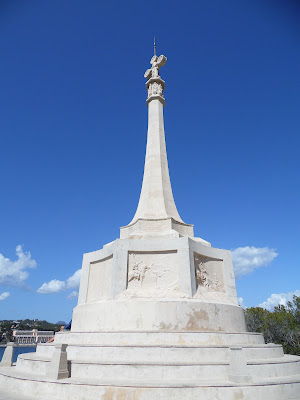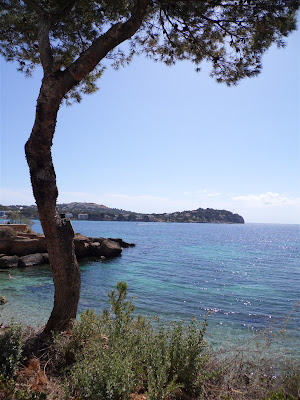The area also contains an archaeological site of great importance with more than fifteen separate sites of particular interest around the hill. This was the site of settlements which were in use between 850 BC and 1229 when King James 1st invaded the island. Dotted around, are the excavated remains of several houses, towers and industrial buildings. Right on the top, at an elevation of around 390 ft above sea level, what is now known as Tower III, affords some wonderful views of the surrounding countryside.
The tower itself dates from the Talayotic Period between 850 - 650 BC. the walls were about 6 feet thick and was used as a defencive tower looking out over the whole area as well as the natural port below.
Built around the outside of this tower, are several later buildings with many architectural details still visible, including the large central stone to support the roof.
Among the other buildings which dot the hillside, many were used for light industry, including charcoal burning and farming. Among these, some living accommodation is still to be seen, rebuilt to provide the visitor with a better idea of how things looked. Inside one of these, a very suspicious-looking Iron-age individual was still to be found, rather unconvincingly preparing afternoon tea...! Good grief, it's Malcolm!
More history tomorrow perhaps...

















































